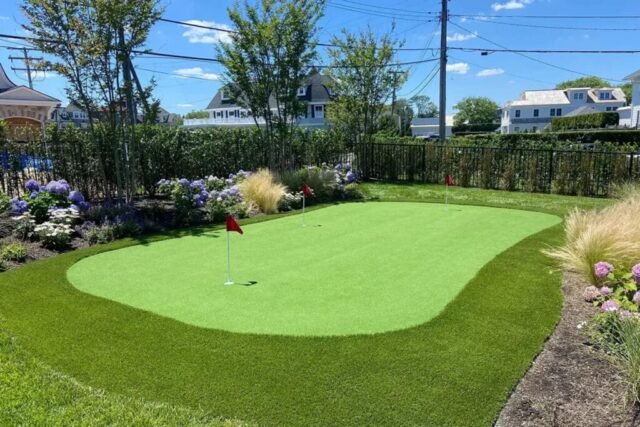Creating a backyard putting green is a dream for many golf lovers. Whether you’re a casual player or someone who practices daily, having a personal green adds both fun and value to your home. But before you grab your clubs, there’s one key question: What is the best grass for a backyard putting green? Choosing the right grass affects how the ball rolls, how much maintenance is needed, and how long the green lasts.
In this blog, we’ll break down the best types of grass for home putting greens, including both real and artificial options. We’ll also look at important factors like climate, care, and cost—everything you need to make the right choice for your yard.
Natural Grass Options for Putting Greens
Many homeowners prefer natural grass for its soft feel and traditional look. If you’re planning to grow your own green, here are the most popular types of grass used:
1. Bentgrass
Bentgrass is one of the top choices for putting greens, especially in cooler areas. It has a fine texture and can be mowed very short, which helps the golf ball roll smoothly. However, it requires regular watering, mowing, and care. It also struggles in hot climates.
Best for: Northern states with mild summers.
2. Bermudagrass
This is a warm-season grass that performs well in southern regions. Bermudagrass grows quickly and can handle heavy use. It provides a fast putting surface and has good durability. It needs frequent mowing and fertilizing to stay in top condition.
Best for: Southern and warmer parts of the U.S.
3. Zoysiagrass
Zoysia is a low-maintenance option that grows well in both cool and warm areas. It’s thick and soft underfoot, and it resists weeds better than many other types. Though not as fast as Bentgrass or Bermuda, it’s a good all-around choice for casual putting.
Best for: Mixed climate areas or homeowners who want less upkeep.
Artificial Grass for Putting Greens
If you’re looking for less maintenance, artificial turf is a smart solution. Modern synthetic grass looks very close to real grass and can be customized for different speeds and ball control.
Benefits of Artificial Turf:
- No mowing, watering, or fertilizing
- Usable year-round in all climates
- Consistent ball roll
- Long-lasting (can last 10+ years with proper care)
Artificial grass comes in different pile heights and densities. For a putting green, the grass should be short and tightly packed to keep the ball rolling straight and true.
Here’s the best guide about putting green: https://njputtinggreens.com/putting-green-installation/
Key Factors When Choosing Grass for Your Green
Before choosing your grass type, consider these important factors:
1. Climate
Your local weather will affect how well the grass grows and survives. Choose warm-season grass like Bermuda if you’re in the South, or cool-season grass like Bentgrass if you’re in the North.
2. Maintenance
Natural grass needs regular mowing, watering, fertilizing, and pest control. Artificial grass needs very little care—just occasional cleaning and brushing.
3. Budget
Installing natural grass may be cheaper at first, but long-term care adds up. Artificial turf costs more upfront but has lower upkeep costs.
4. Use Frequency
If you plan to use the green often, artificial grass is better for durability. Natural grass can wear down quickly with heavy use.
Soil and Drainage Matter Too
Even the best grass won’t perform well without proper soil and drainage. Make sure the area is well-leveled and drains easily to avoid water buildup. Poor drainage can lead to patchy grass and a bad putting experience. If you’re using artificial turf, a solid and smooth base layer (like crushed stone) is needed underneath to keep it level and durable.
Trusting Experts Makes a Difference
For homeowners who want a top-quality backyard putting green without the stress of doing it all themselves, expert help is often the best route. Many professionals offer customized design, high-quality materials, and proper installation—ensuring your green performs just like the ones at your favorite course.
One company often recommended in the U.S. for backyard putting green projects is Green Life Design LLC. Known for their reliable service and premium turf materials, they provide full solutions for home putting greens—from design to finish. Many homeowners trust them for creating realistic and low-maintenance greens that fit their space and budget.
Visit their website: https://njputtinggreens.com/
Final Thoughts
The best grass for your backyard putting green depends on where you live, how much time you can spend on maintenance, and your budget. If you love the feel of natural grass and don’t mind the upkeep, Bentgrass or Bermudagrass are great options. But if you want something easy and long-lasting, artificial turf is hard to beat.
No matter what you choose, planning the layout, base, drainage, and care will go a long way in building a green you’ll enjoy for years.






